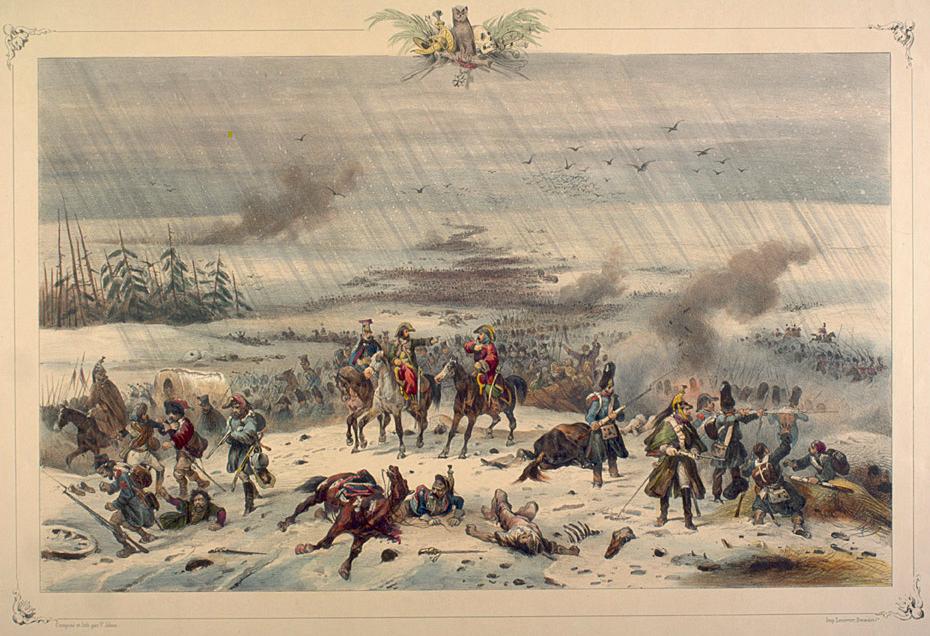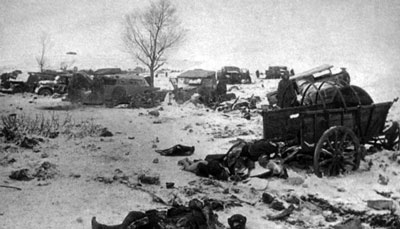This post deals with the "Defence Line concept of NEFA" proposed by Gen Thorat but rejected by the Government. I will try and analyse that how this would have affected our defence of NEFA when the Chinese actually came down the hills in Oct 1962.
In his book, "War in the High Himalayas" Gen Palit writes ....
" The truth is that we were planning and operating in a doctrinal vacuum. (Well we had a doctrinal vacuum till early 2000s, that is when we first came out with The Indian Army Doctrine) At no time do I recollect receiving an assessment of threat from Divisional HQ (presumably HQ 4 Infantry Division, which had been moved from Ambala to Tawang).
The Division based its deployment less on tactical appreciation and more on a gut reaction that all available troops must be pushed quickly up into the mountain reaches. how the defensive positions would be coordinated or the troops kept supplied in battle was never made clear. I do not think that any formal study had been made of Chinese army organisations, force structures or methods of warfare. We were given no policy or guidelines regarding static or mobile defence, harassing roles to be played by stay-behind parties, or the possible employment of tribal manpower for our defence preparations.
Thorat intended to hold strong-points along a defensive line running more or less parallel to the McMohan Line but between 50 and 60 miles to the south. From this line army patrols or posts could be sent forward to support Assam Rifles detachments on the border. "
The map above shows the places selected by Gen Thorat for his line of defence of NEFA.
Gen Palit in his book writes that Thorat had listed the places without carrying out a reconnaissance in the mountains. Each of these points were separated from each other by many kilometers of high mountain ranges and deep valleys unconnected by lateral routes. But then the Border Roads Organisation (BRO) was set up for the purpose of building lateral routes, in which it has failed, till date. Also, as we shall see, Gen Palit's criticism of this plan may be valid but had this been implemented, it would not have resulted in our forces running away from NEFA as subsequently happened. (The Chinese took Tawang without a fight, 4 Infantry Division disintegrated at Dirang and one of its brigade withdrew from Se-la - Senge complex without a fight)
Palit continues ...
" Thorat had indeed made his defence plan from a study of the map and not rom personal reconnaissance. Till the end of 1959, the Governmend of India had entrusted the defence of NEFA to the Assam Rifles, a paramilitary force under the Ministry of External Affairs (now under Home Ministry), which was neither equipped nor trained for this role. The Prime Minister had made this decision for the socio-political reason. 'Philosophy for NEFA' aimed at protecting the primitive tribal peoples from a precipitate exposure to the commercial and often venal culture of the plainsmen. He (i.e. Nehru) did not wish to disrupt this experiment with the sudden influx of large numbers of army troops. The Assam Rifles, essentially a police force operating under the local administration, could be blended in with the tribal experiment, whereas the army would perforce give top priority to defence rather than to administrative requirements. (Now, regular Army officers and other ranks are posted to Assam Rifles on temporary basis)"
The gist of the Thorat paper on defence of NEFA is as under :
"IT MUST BE APPRECIATED THAT IN THE EARLY STAGES OF ANY WAR THE ATTACKERT WILL ALWAYS HAVE THE INITIAL ADVANTAGE OVER THE DEFENDER BECAUSE HE CAN CHOOSE THE TIME AND PLACE FOR THE ATTACK AND CAN THEREFORE APPLY ALL HIS STRENGTH AT ANY GIVEN POINT. THEREFORE, HE WILL GET INTO THE DEFENDER'S TERRITORY AND MAKE PENETRATIONS. IF THIS HAPPENS THE DEFENDER MUST NOT LOSE HEART BECAUSE HE WILL HAVE HIS SAY WHEN HE HAS LOCATED THE MAIN THRUST AND MOVES HIS RESERVES TO MEET IT - VERY LIKELY ON GROUND OF HIS CHOOSING. THERE HE WILL GIVE BATTLE, STABILIZE THE SITUATION, AND THEN STEADILY PUSH THE ENEMY BACK. THIS PROCESS MAY TAKE A LONG TIME, BUT THERE IS NO OTHER ANSWER TO IT WHEN ONE IS ON THE DEFENSIVE.
EVEN IF I WERE TO DISPERSE MY FORCE ON A 'THIN RED LINE' ALL ALONG THE BORDER, IT WILL SERVCE NO USEFUL PURPOSE FOR I SHALL BE WEAK EVERYWHERE AND STRONG NOWHERE. THEREFORE, I DO NOT PROPOSE TO DO SO.
AS THE ENEMY COMES FARTHER AWAY FROM HIS BASES ON THE OTHER SIDE OF THE MCMOHAN LINE, HIS COMMUNICATIONS WILL GET STRETCHED. HE WILL FIND IT INCREASINGLY MORE DIFFICULT TO MAINTAIN HIS FORCES, AND THE SITUATION WILL GET WORSE DAY BY DAY. A STAGE WILL COME WHEN HIS MAINTANENCE DIFFICULTIES WILL BE SAME AS MINE, AND IT IS THEN THAT I SHALL GIVE HIM THE FIRST REAL FIGHT. THE SCENE OF THIS BATTLE WILL BE A LINE RUNNING EAST AND WEST THROUGH THE MIDDLE OF NEFA AND FOR PURPOSES OF THIS PAPER I PROPOSE CALLING IT THE DEFENCE LINE.
THE DEFENCE LINE WILL CONSIST OF A SUCCESSION OF VITAL POINTS. THE CHOICE OF THESE WILL DEPEND NOT ONLY ON THEIR TACTICAL VALUE BUT ALSO ON OUR ABILITY TO MAINTIAN AND SUPPORT THEM. THIS PRESUPPOSES THAT THERE SHOULD BE A ROADHEAD OR AN AIRHEAD (ROAD AND AIR LINKS) AT EACH OF THESE POINTS. WITHOUT THESE THE ABILITY OF THE GARRISONS TO PUT UP A PROTRACTED DEFENCE WILL BE LIMITED. THE DEFENCE LINE AS I ENVISAGE IT WILL BE TOWANG (KAMENG DIVISON) - ZIRO-DAPORIGO (SUBANSIRI DIVISION) - ALONG (SIANG DIVISION) - ROING - TEZU - LOHITPUR HAYULIANG (LOHIT DIVISION) - JAIRAMPUR (TIRAP DIVISON)
THIS LINE SHALL BE THE MAIN DEFENSIVE POSITION BEYOND WHICH I SHALL ACCEPT NO PENETRATION. IN OTHER WORDS, IT IS ON THIS LINE THAT I SHALL STOP THE ENEMY AND PROCEED TO DRIVE HIM BACK ACROSS THE MCMOHAN LINE. I HAVE CONFIDENCE THAT GIVEN THE NECESSARY RESOURCES I WILL NOT ALLOW THE ENEMY TO CROSS THIS LINE. THIS LINE WILL DIVIDE NEFA INTO TWO HALVES. THE AREA NORTH OF DEFENCE LINE SHALL BE KNOWN AS THE NORTHERN SECTOR AND THE AREA SOUTH OF IT AS A SOUTHERN SECTOR."
Gen Palit's analysis of this paper is given below.
" ..a border is unlikely to be the most suitable locality for the main defensive battle, which is what Thorat was arguing. Paramilitary forces, less heavily armed than the army, can hold a border temporarily, offer initial resistance, but fall back when pressed. The regular army chooses the main defensive positions on the basis of suitable terrain, communications and logistical potential.
The salient points of Gen Thorat's warcraft was that our main forces must not be stretched thin along the length of the border where every military advantage would lie with the enemy. Instead, the defence plan must allow for an initial enemy penetration, while our main forces prepare to defeat the invader in a depth area, on ground of our own choosing and where we could bring superior resources to bear on the battlefield.
Thorat envisaged manning the border with paramilitary assam rifles, whose task it would be to inflict causalities, delay an enemy invasion, give early warning and either harass the enemy's line of communication as stay behind guerrillas or fall back to the southern sector to thicken its defences. Regular forces would hold the southern sector which unlike the northern sector would be accessible by road and thus logistically feasible."
Brig Dalvi, in his book "The Himalayan Blunder" gives out the following analysis and his own perception regarding Gen Thorat's plan.
"General Thorat.... correctly appreciated that the key to the defence of the Assam plains was around Bomdilla.
It was necessary to move from firm base to firm base(Firm base is an area of tactical importance, the occupation of which by troops, enables the commanders plan to be implemented), and not backwards from the political boundaries of the country. Political and military boundaries seldom coincide. The McMohan line cannot be defended by sitting on it.
The strategic deployment and disposition of regular troops is dictated solely by the ground and administrative factors.
In the context of the border problem with China it may be necessary to setup check posts, border posts or flag posts to establish our claims by physical possession, and to provide day to day protection to the civil administration. They must not, however be treated as defended zones or tactical positions, to be defended to the last man and last round.
In 1960 the Chinese already had a network of good roads opposite NEFA. The General's plan might have entailed the initial trading of space for time to rush fresh troops forward, establish communications, setup the administrative arrangements and above all, ascertain the main thrust of the enemy before committing his reserves.
Government's solution to the military problem of defending the border was to locate a string of small, weak outposts (which were mostly section strength, i.e. approx. 10 persons) backed by company strength (approx. 100 personnel) detachments of regular troops all along the border.
In difficult terrain, it is militarily unavoidable to trade space for time. In war the primary aim is the destruction of enemy forces."
Brig Dalvi gives three excellent examples of trading space with time for final destruction of enemy forces. I quote them below.
" Both in 1812, when Napoleon invded Russia and in 1941 when Hitler launched an invasion, the Russians drew the advancing armies deep into Russian territory. They relied on their most formidable weapons -- snow in winter and the dreaded spring thaw which turns turns Russia into a vast sea of mud, that brings armies to a grinding halt. In both cases the Russians sapped the vitality of the advancing enemy; and on both occasions mighty Russian counter-offensives regained all lost territories and destroyed or ejected the invaders.
In 1944, Field-Marshal Sir William Slim, commander of the British/Indian 14 Army, faced a major Japanese offensive from Burma into India, aimed at capturing the base at Dimapur. Slim had the option of fighting from his postions or falling back to Kohima. After careful delibration, he opted for the latter course despite strong political pressure not to abandon any Indian territory and give the Indians the impression that the Allies were losing. He stood firm and based his plans entirely on military considerations. Had he fought from his forward positions on the Chindwin river, his lines of communication would have been long and tenuous. A defeat would open the way to the plains of Assam. His decision to fall back and shorten his lines, and to a better killing ground at Kohima, forced the Japanese Commander, General Mutaguchi, to extend his lines. By standing fast at Kohima despite being invested, till the outbreak of the monsoons, victory was assured. The Japanese could not maintain their forces and had to retreat. The defeat was so overwhelming that Field-Marshal Slim followed up his Kohima victory with the classic pursuit operation to Rangoon itself, which fell in May 1945"


